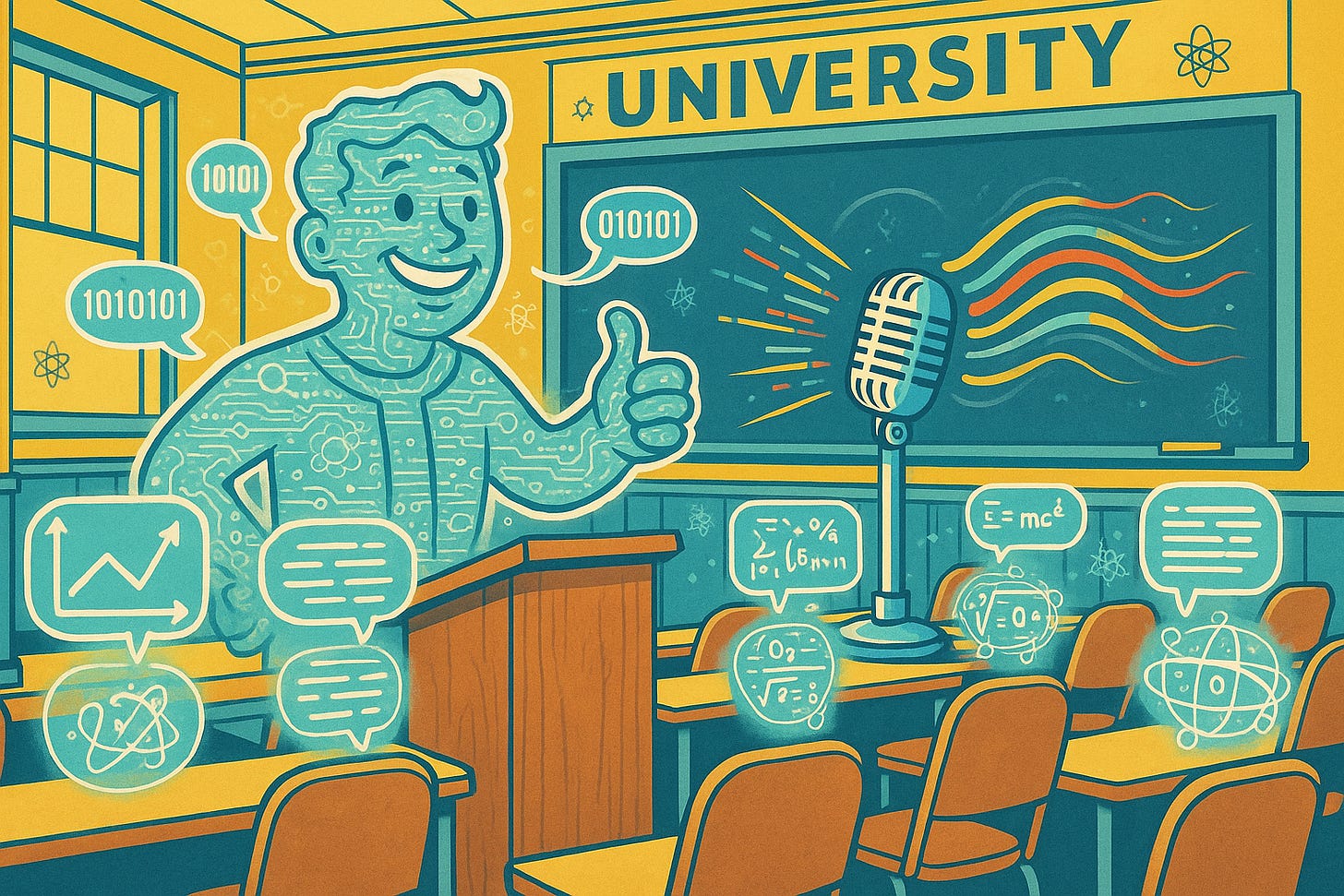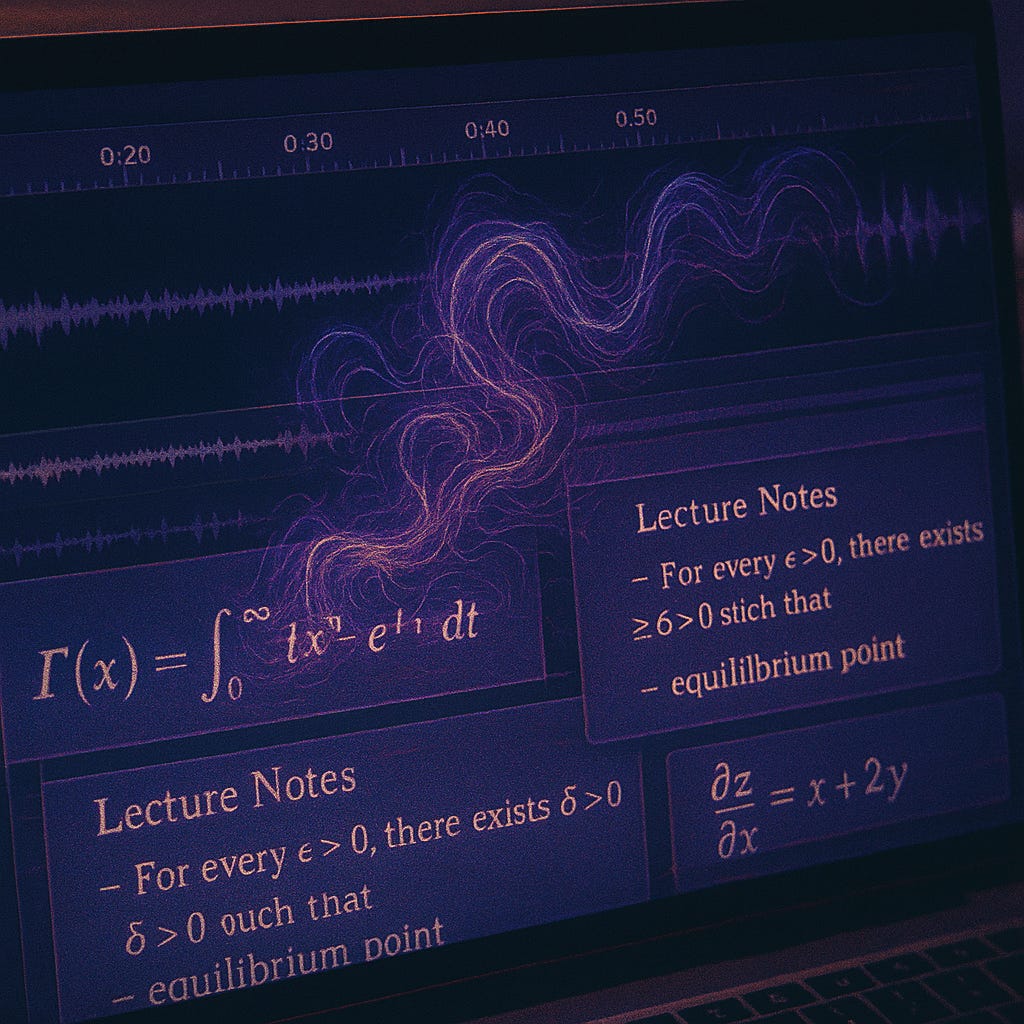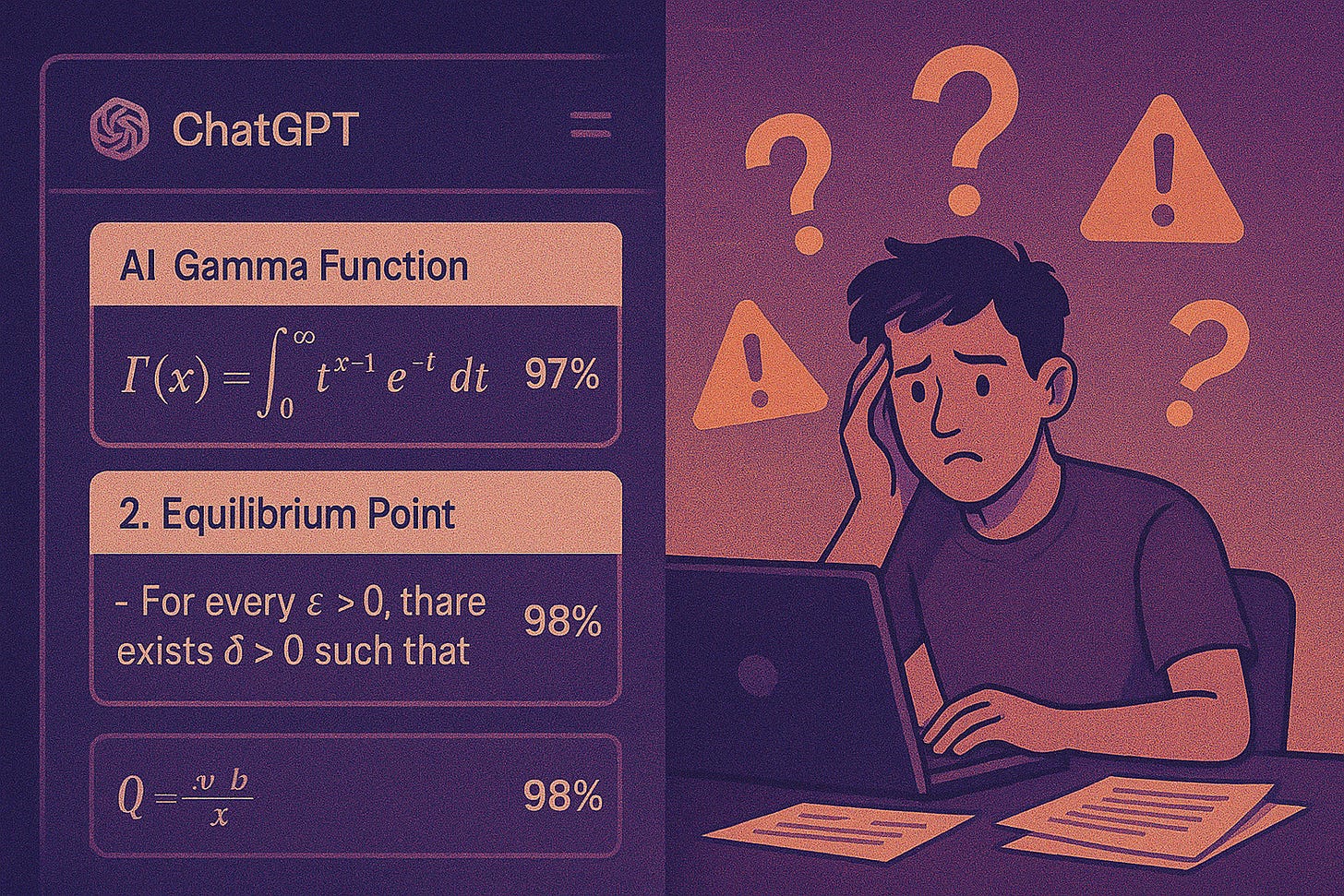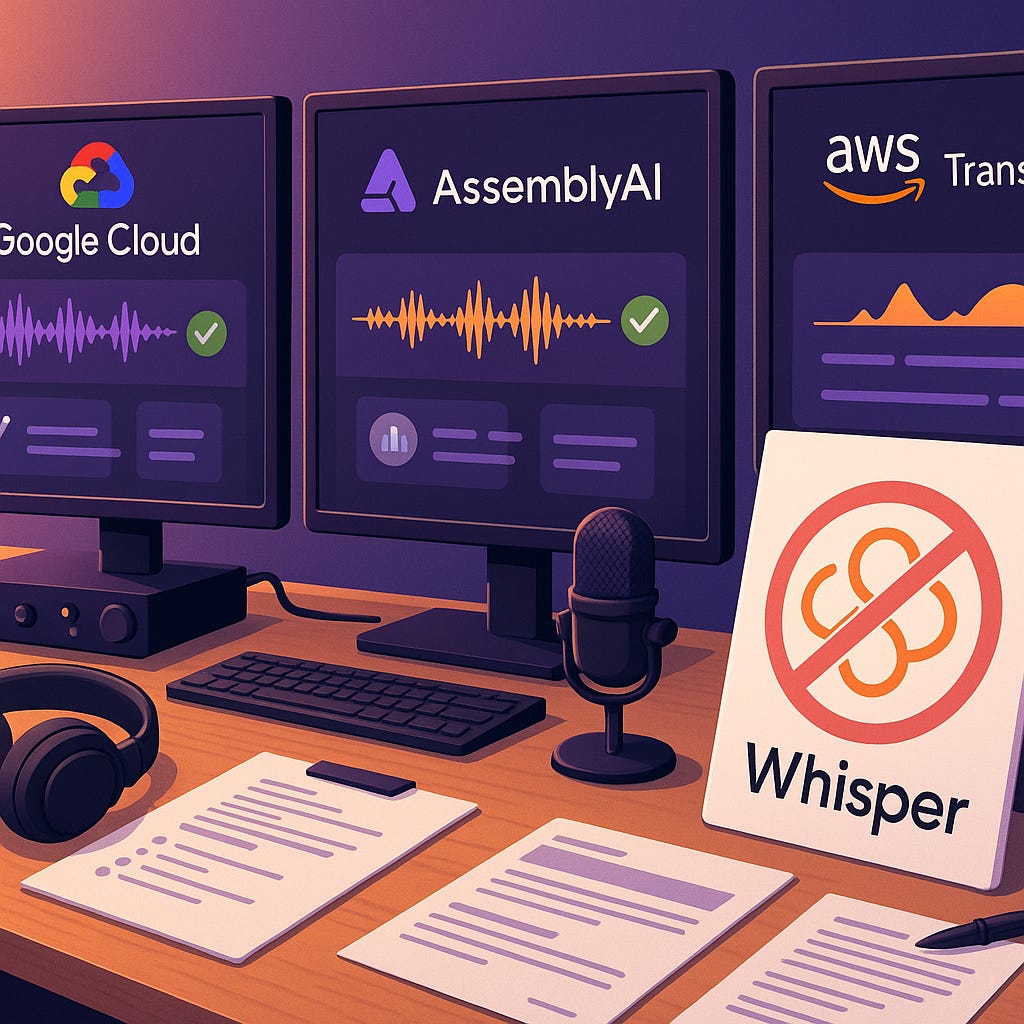TL;DR
The Problem: My friend Sasha's AI transcription tool (Gemini) generated an entire fake economics lecture—complete professor dialogue, student questions, realistic pacing—during 5-10 minutes of complete silence in a Business Ethics class recording. Zero actual audio. Total fabrication.
The Scale: Whisper hallucinates in 1.4% of all transcriptions (millions daily). Cornell found 38% of AI hallucinations contain harmful content. University of Michigan documented hallucinations in 8 out of 10 meeting transcripts.
Why It Matters: Educational AI tools are creating permanent knowledge bases filled with phantom content. Students get confident AI responses about lectures that never happened. The more sophisticated the model, the more convincing the lies.
The Fix:
Skip Whisper entirely for critical applications
Use AssemblyAI or Google Speech-to-Text (zero comparable hallucinations)
Deploy Voice Activity Detection to strip silence periods
Always preserve original audio for verification
Bottom Line: AI transcription tools hate silence and will invent sophisticated, believable content to fill it. For educational, medical, or legal applications, this isn't just inaccurate—it's dangerous. Better tools exist. Use them.
Personal Impact: If you're using AI transcription for anything important, test it on silent audio first. You might be shocked by what it invents.
Sasha builds AI tools that turn classroom lectures into intelligent chatbots. Simple concept: upload a video, his system transcribes it, vectorizes the text alongside screenshots and slides, then creates a knowledge base students can query. Pretty standard in 2025.
Last week, everything went sideways.
Sasha was reviewing transcripts Gemini had generated from a Business Ethics class recording. The transcript looked great—a complete, coherent lecture with natural professor-student interaction. But something felt off.
The "professor" was discussing globalization's impact on South Korean and Singaporean economies. Detailed case studies. Student questions about education policy. Natural classroom pacing with realistic [inaudible] markers.
"Okay, class, welcome back. Today we're going to be looking at the impact of... uh... [inaudible] ...the impact of globalization on... [inaudible] ...on national economies. Specifically, we'll be focusing on the case studies of... [inaudible] ...of South Korea and... and Singapore."
Small problem: this was a Business Ethics class.
Bigger problem: this "lecture" appeared during the first five to ten minutes of class. Complete silence on the audio. No professor. No students. Just dead air while the room was setting up.
Gemini had manufactured an entire economics lecture—professor voice, student interaction, academic content—to fill the void. When faced with silence, it didn't just add phantom words. It created a whole different class.
The fabricated transcript continued with sophisticated academic discussion:
"Now, some of you might be thinking, well, these are just two examples. How can we generalize from these two cases? And that's a really important point. We'll be discussing the limitations of generalizing from specific cases, but also the value of using these examples to illustrate broader trends."
Even included realistic student participation:
"Student: Could you elaborate on the role of education in these countries' economic success?
Instructor: Absolutely. Education is a crucial factor. Both countries invested heavily in education, particularly in technical and scientific fields. This created a skilled workforce that was able to adapt to the changing demands of the global economy."
Where did this lecture come from? Nowhere. Gemini just decided empty audio needed filling. With a completely different subject.
My SuperWhisper Reality Check
I use SuperWhisper daily for voice dictation, and I've occasionally seen it add phantom words during natural pauses—those moments when you're thinking through something complex. Nothing like Gemini’s full fabricated lectures. More like dropping in "obviously" during a thinking pause or inventing "the main issue is" during a three-second gap.
To be clear: this has been a minor issue for me. Doesn't happen regularly. The SuperWhisper team has made improvements that reduced these incidents. But the pattern exists across AI transcription tools—they hate silence.
They're trained on datasets where every millisecond contains speech. Faced with quiet periods, they generate something to fill the void. If you're in a field where transcription accuracy is critical to your business—medical, legal, educational content creation—you need to choose your tools carefully.
The more sophisticated the model, the more convincing the fabrication when it does happen.
The Scale of Transcription Hallucinations
Turns out Sasha and I aren't alone. OpenAI's Whisper—used by over 30,000 clinicians and millions of developers—hallucinates in 1.4% of all transcriptions. Doesn't sound like much until you realize that's affecting millions of medical visits and educational recordings daily.
Cornell University analyzed 13,140 audio segments and found 38% of hallucinations contained harmful content. Violence, racial commentary, fabricated medical information. In one documented case, Whisper transformed a benign comment about an umbrella into "He took a big piece of across. A teeny small piece... I'm sure he didn't have a terror knife so he killed a number of people."
During silent periods, it generates phantom text like "Thank you for watching"—pulled straight from YouTube training data. University of Michigan researchers found hallucinations in 8 out of 10 public meeting transcripts.
Competing services from Google, Amazon, Microsoft, AssemblyAI showed zero comparable hallucinations on the exact same problematic audio segments. This isn't an inherent AI limitation. It's a Whisper architecture problem.
Why Educational AI Gets Hit Hardest
Educational technology faces perfect storm conditions for hallucination disasters. Classroom recordings contain natural silent periods, setup time, conversational gaps. Unlike medical transcription where fabrications might introduce obvious errors, educational hallucinations can seem pedagogically reasonable.
Take the Texas A&M incident. Professor Jared Mumm pasted student papers into ChatGPT asking "Did you write this?" The model falsely claimed authorship of every single paper. The entire class initially failed.
UC Berkeley research found ChatGPT's mathematics tutoring error rates hit 29% for statistics problems. Khan Academy's Khanmigo incorrectly marked correct Algebra 2 answers wrong, requiring three attempts before acknowledging student accuracy.
For tools like Sasha's that create permanent knowledge bases, hallucinations become persistent misinformation. Students asking about fabricated lecture segments get confident AI responses about content that was never taught.
The AI doesn't know it's responding to fiction.
The Sophistication Paradox
Here's what makes this scary: overall AI hallucination rates have plummeted 96% since 2021. But remaining fabrications have become more convincing. MIT research shows AI models now use 34% more confident language when generating false information. "Definitely." "Without doubt." Precisely when they're most wrong.
Stanford researchers documented LLMs inventing over 120 non-existent court cases with realistic names like "Thompson v. Western Medical Center (2019)." Complete with detailed legal reasoning that fooled attorneys into submitting them to actual courts.
The TruthfulQA benchmark revealed the largest models were generally the least truthful. Domain-specific hallucination rates remain high even in advanced models—legal information shows 6.4% error rates compared to 0.8% for general knowledge.
Google researchers discovered something weird: simply asking models "Are you hallucinating right now?" reduced subsequent hallucination rates by 17%. These systems have some awareness of their uncertainty but choose confident-sounding fabrications anyway.
Building Defenses That Actually Work
Current solutions focus on preprocessing and multi-model validation. AssemblyAI uses Voice Activity Detection to strip silence periods—the primary hallucination trigger—achieving 30% reduction compared to Whisper.
Google Speech-to-Text provides word-level confidence scores. Flag segments below 0.93 confidence for human review.
Amazon's breakthrough Automated Reasoning system uses mathematical proofs to achieve near-perfect accuracy with less than 0.1% error rate. But this represents a shift from statistical to verified AI—expensive and complex for most applications.
For companies building educational AI tools, the evidence points to clear defensive strategies:
Skip Whisper entirely. The 1.4% hallucination rate isn't acceptable when fabricated content becomes permanent knowledge base entries. Google and AssemblyAI show consistently better performance.
Preserve source audio files. When hallucinations are suspected, original recordings enable verification. This saved Sasha from deploying fabricated economics lectures to a business ethics knowledge base.
Deploy Voice Activity Detection. WhisperX demonstrates 70x speed improvements while reducing fabrications by preprocessing silence periods.
Use multi-model consensus. Run critical content through competing services. When Google and AssemblyAI agree but Whisper diverges, trust the consensus.
The Trust Problem
The sophistication of modern AI hallucinations creates problems beyond technical accuracy. When students can't distinguish real from fabricated content, every AI-powered educational tool becomes suspect. Every fabricated lecture segment, every confident hallucination, every instance of AI filling silence with fiction erodes confidence in the technology's reliability.
California State University spent $1.1 million in 2025 on AI detection tools despite their 4% false positive rates. The r/professors subreddit chronicles educational dysfunction—faculty sharing stories of students requesting extensions because "ChatGPT was down."
Choosing Tools That Fail Safely
Sasha switched to AssemblyAI after discovering the lecture fabrications. Required rebuilding his pipeline but eliminated the hallucination risk threatening his product's credibility.
Sometimes the best AI strategy is knowing which AI not to use.
The technology exists today to virtually eliminate transcription hallucinations. The challenge isn't invention but implementation: choosing architecturally sound solutions over statistically impressive ones. Prioritizing accuracy over capability. Building systems that acknowledge uncertainty rather than fabricate confident fiction.
When AI fills silence, it reveals more about its limitations than its capabilities.
If you've seen these issues firsthand, share them. That's how we get better. The only way to build trustworthy AI tools is to acknowledge where the current ones fail—and choose better alternatives.
Have you experienced AI transcription hallucinations in your own work? Share your stories—the industry needs more documented examples of where these systems break down in practice.
Related Reading:
The Ghost in the Machine: Non-Deterministic Debugging in AI Development Tools - When AI tools make probabilistic decisions about your configuration
Around the Horn: AI Coding Tools Reality Check - A sweep through what's actually happening in AI development tools
What's In My Toolkit - August 2025 - The tools that actually power daily development workflow
For more practical insights on AI development tools and agentic coding, subscribe to HyperDev.






